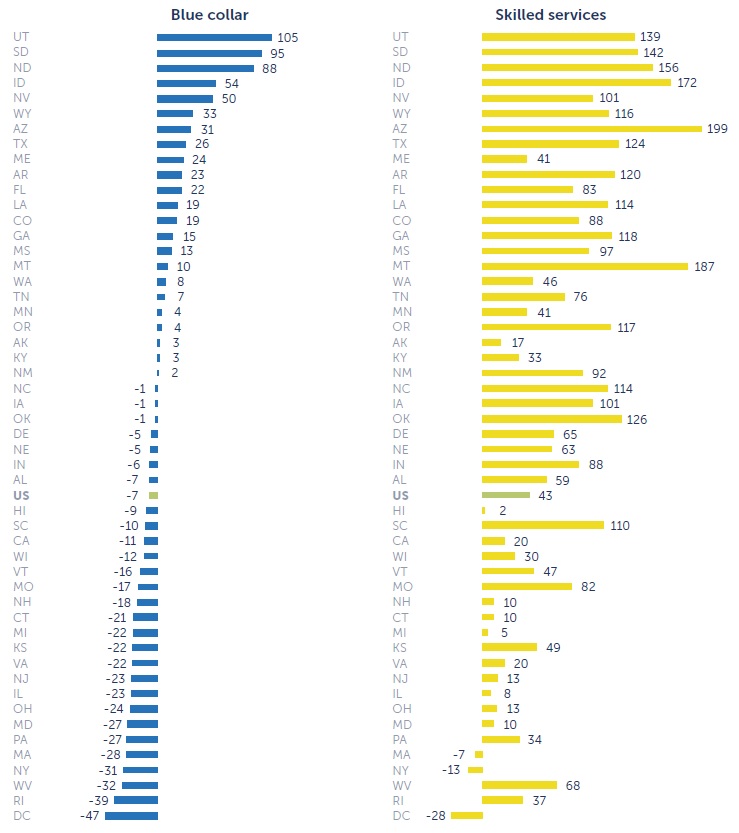A recent report released by the Georgetown University Center on Education and the Workforce and JP Morgan Chase & Co. showed that there are 30 million good jobs in the United States that pay well without a bachelor’s degree. “Good jobs” are defined as those that pay at least $35,000 per year for those under age 45 and at least $45,000 per year for those 45 and older. Jobs that meet these criteria pay a median annual wage of $55,000 and are changing from traditional blue-collar industries to skilled-services industries.
In an update to this report, the researchers at Georgetown University released a state-by-state analysis that finds nearly half of states have added good blue-collar jobs that don’t require bachelor’s degrees (BAs).
1. In Utah, good jobs for high school grads are being replaced with jobs requiring a college credential.
Good Jobs That Pay without a BA: A State-by-State-Analysis finds that since 1991, workers with associate degrees have claimed a rising share of good jobs in every state, while high school graduates in nearly every state lost ground. Utah saw a 7% decrease in the share jobs held by high school graduates, while jobs held by associate degree holders rose 11%.
Percentage point change in the share of non-BA good jobs held by workers with different education levels, 1991-2015
2. Good jobs saw the highest increase in Western states.
Across the nation, including Utah, good jobs have shifted toward associate degree holders and away from workers with a high school diploma or less. Western states saw the largest percent growth in good jobs for those without BAs:
3. Utah led the nation in increase of the number of blue-collar, non-BA good jobs.
Since 1991, the Utah has grown the number of non-BA good jobs from 146,000 to 319,000, or an increase of 119%, more than any other state in the nation. Utah had a net gain of non-BA jobs with an additional 92,000 non-BA blue collar jobs and 81,000 non-BA skilled services jobs.
Utah had the largest increase in blue-collar jobs in the nation, and saw the 6th-highest increase in skilled-services jobs:
Change in non-BA good jobs (%) 1991-2015
GoodJobsData.org has a tool that allows users to sort jobs by industry, occupation, and education level at the national and state levels.
4. Educational pathways give students options.
The report suggests that to restore the health of the middle class it will be crucial to map both the educational pathways and the occupational pathways that are available to workers at different levels. That is why institutions within the Utah System of Higher Education (USHE) are working hard to create meaningful educational pathways that will help students obtain a certificate or associate degree that has value in the labor market and will also provide options for students to pursue additional education. Recently, USHE published the 2017-18 Concurrent Enrollment Exploratory Majors Pathways to help guide students as to which CE Math course would be most beneficial for their future college major.

